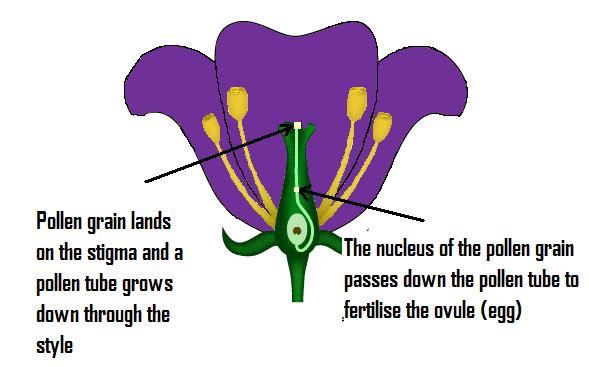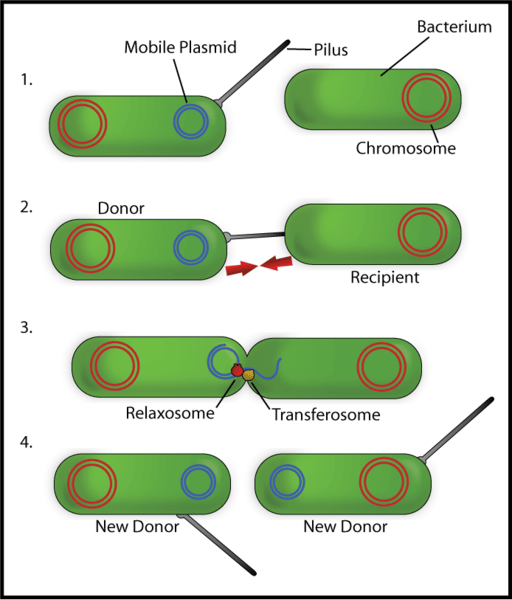The key difference between autogamy and conjugation is the number of organisms involved in the process. Autogamy requires a single organism to undergo self-fertilization and produce offspring, while conjugation involves two organisms to exchange the genetic matter between them.
Autogamy and conjugation are modes of reproduction in different organisms. These processes can take place in lower level microorganisms as well as in members of the kingdom Plantae. Moreover, they show various adaptations to facilitate these modes of reproduction. However, this article mainly focuses on the difference between autogamy and conjugation.
CONTENTS
1. Overview and Key Difference
2. What is Autogamy
3. What is Conjugation
4. Similarities Between Autogamy and Conjugation
5. Side by Side Comparison – Autogamy vs Conjugation in Tabular Form
6. Summary
What is Autogamy?
Autogamy also refers to the process of self-fertilization. It is the opposite process to cross-fertilization, which involves the fusion of gametes from two different mating organisms. The self-fertilization process takes place in some microorganisms as well as in plants. During autogamy, the fusion of gametes takes place. However, a single organism produces both types of gametes. Thus, we call them autogamous organisms. Furthermore, meiosis takes place in the development of gametes in autogamy.

Figure 01: Self-Pollination
Moreover, autogamy takes place in Paramecium species under extreme conditions, ensuring their survival under those conditions. Also, it is the most common scenario seen in plants that are self-pollinating. They have special adaptations to ensure autogamy. There are many advantages of self-pollination or autogamy in plants. One such advantage is that these plants do not require a pollinating agent. Further, autogamy saves genetic constituents along with the species and ensures the viability of the offspring. However, this process brings no variations into the generation, which can be considered as a disadvantage of it.
What is Conjugation?
Conjugation mainly takes place in bacteria. It is the process by which one bacterium transfers its genetic material to another by direct contact. It is a sexual mode of reproduction in bacteria. The donor bacterium transfers genetic material via the sex-pilus. Moreover, the production of the pilus takes place via the fertility factor or the F factor in bacteria. The pilus is a tube-like structure that transfers the genetic material to the recipient bacteria. Usually, the genetic material transfer takes place via a plasmid during conjugation.

Figure 02: Conjugation
The phenomenon of conjugation is used at present in recombination DNA technology to introduce beneficial genes of interest into other bacteria. These genes include disease-resistant genes, antibiotic-resistant genes, temperature resistant genes and pest-resistant genes, etc. Therefore, these recombinant microbes with altered genetic composition can be propagated in large scale to produce the desired protein.
What are the Similarities Between Autogamy and Conjugation?
- Autogamy and conjugation are two reproduction methods.
- Moreover, both processes involve meiosis.
What is the Difference Between Autogamy and Conjugation?
Autogamy and conjugation both belong to different modes of reproduction. Autogamy requires only one organism exhibiting an asexual mode of reproduction while conjugation requires two organisms who could exchange their genetic matter via the sex pili exhibiting a sexual mode of reproduction. So, this is the key difference between autogamy and conjugation. Moreover, plasmids play an important role in conjugation, but not in autogamy.
The below infographic presents more information regarding the difference between autogamy and conjugation.

Summary – Autogamy vs Conjugation
In summarizing the difference between autogamy and conjugation, autogamy and conjugation are two modes of reproduction. However, autogamy predominantly takes place in plants that are self-pollinating. Also, it involves one organism, and there is no genetic mixing. In contrast, conjugation involves two organisms to exchange their genetic material from one bacterium to the other one. Thus, this results in genetic recombination of the recipient organism. Nevertheless, both the phenomena show special adaptations and special conditions. And, these processes are also modified in genetic engineering for the benefit of humans.
Reference:
1. Berger, J D. “Autogamy in Paramecium. Cell Cycle Stage-Specific Commitment to Meiosis.” Experimental Cell Research, U.S. National Library of Medicine, Oct. 1986, Available here.
2. “Conjugation (Prokaryotes).” Nature News, Nature Publishing Group, Available here.
Image Courtesy:
1. “Self polination” By Ali Niaz – (CC BY-SA 4.0) via Commons Wikimedia
2. “Bacterial Conjugation en” By Mike Jones – (CC BY-SA 2.5) via Commons Wikimedia
ncG1vNJzZmivp6x7pbXFn5yrnZ6YsqOx07CcnqZemLyue8OinZ%2Bdopq7pLGMm5ytr5Wau26t1K2moJmdrnqiusNmmqimmqq0osDIqKVo